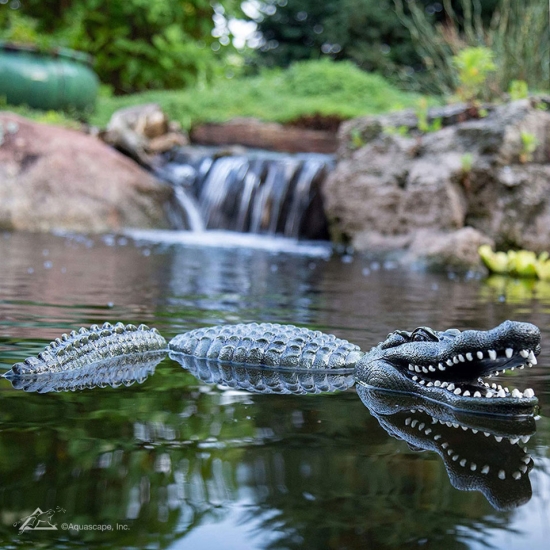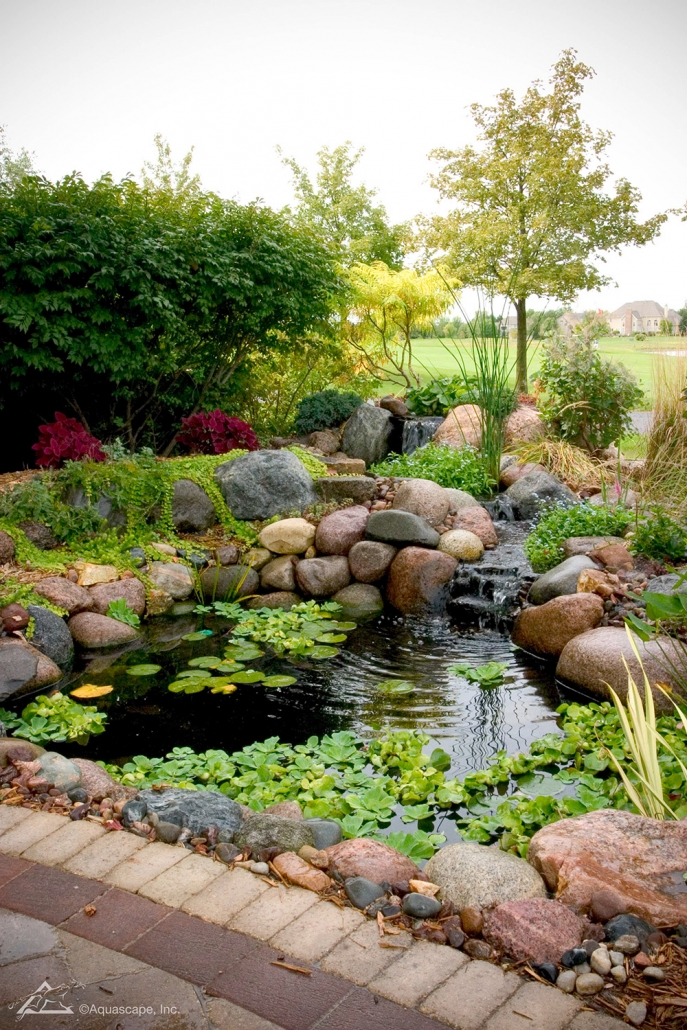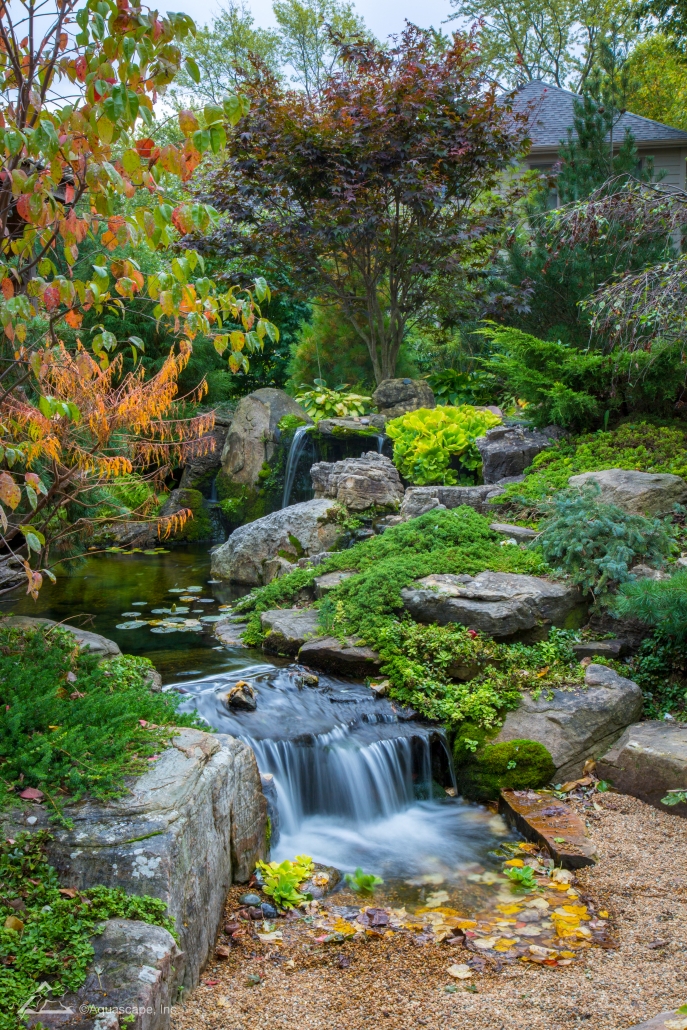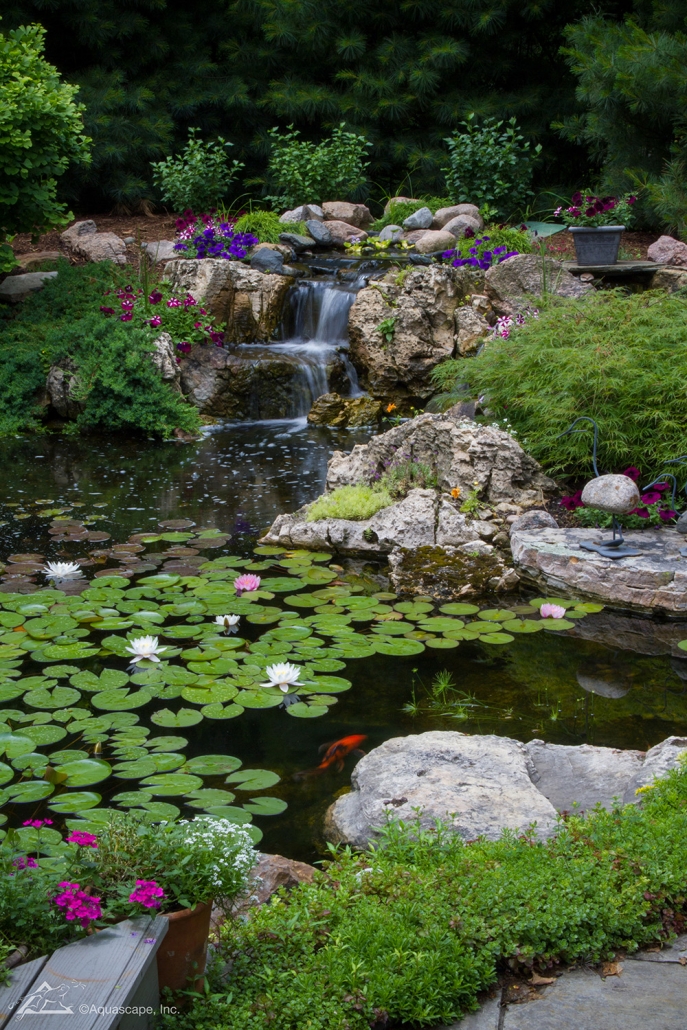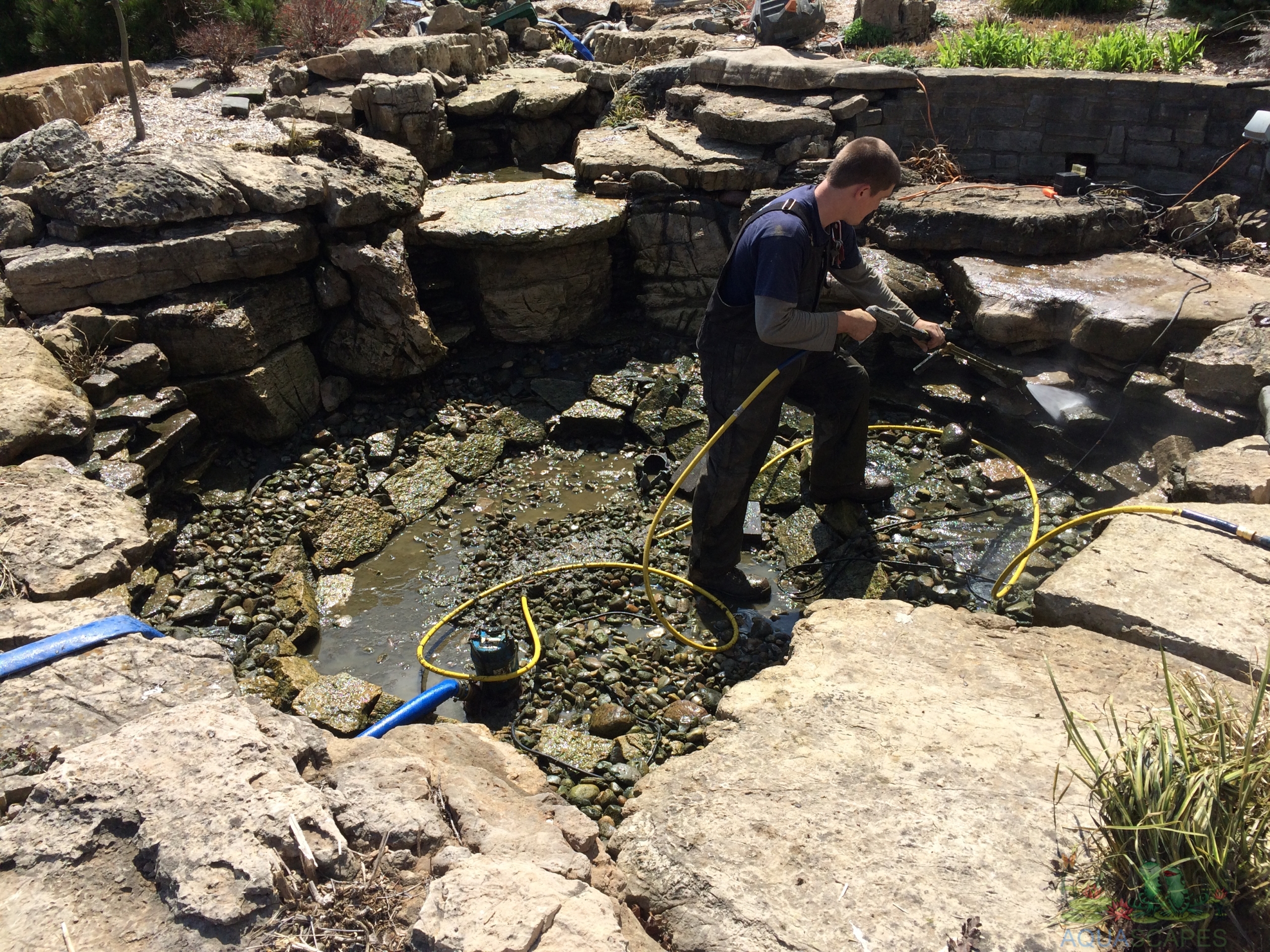How Long Does a Pond Pump Need to Be on Each Day?
A pond pump and a filter are necessary to maintain pond health. A well-maintained pond adds value to a home, and even though a large pond with fish requires more maintenance than a small pond, it is worth the extra effort, providing movement, color and a dramatic landscape element. A pond’s pump should run 24 hours each day to ensure the pond’s water circulates through the filter to keep the water clear.
Pump Function
A pond pump may be submerged in the pond’s water or sit outside the pond, depending on the pump type, but both types work in the same way. The pump uses spinning blades, known as impellers, to pull pond water through a screenlike intake and expel the water through an outlet pipe. Generally, a large pond has an external pump and a smaller pond or water garden has a submersible pump. Any kind of pump requires regular maintenance of its intake filter and screen to prevent clogging.
Pump Size
Before buying a pond pump, calculate your pond’s water capacity to determine the size of pump required to circulate all of the pond’s water through the pump every one to two hours. Formulas can help you determine your pond’s water capacity in gallons from pond measurements taken in feet. The formula for a rectangular pond is length x width x depth x 7.48 = gallons. For a circular pond, the formula is radius x radius x 3.14 x average depth x 7.48 = gallons. The formula for an irregularly shaped pond requires dividing the pond into easier-to-calculate shapes, figuring the water capacity in gallons for each of those shapes and then multiplying the total sum of those gallons by 231 instead of 7.48.
Operating Cost
A pond that has a pump or other electric equipment requires electricity, and so it will increase your monthly electric cost. Some pumps cost less to operate than other pumps. Reduce the cost of pump operation by using a pump that moves the necessary amount of pond water while using the least amount watts; a watt is a measurement of electrical usage. Calculate the cost of operating a pump by using this formula: Divide the watts by 1,000, and then multiply that figure by 24 hours, the number of days per operation and electricity cost. An example is: 300 watts/1000 x 24 hours x 30 days x 0.08 for electricity cost = $17.28 as the cost to run the pump for 30 days.
Other Considerations
Mosquitoes can be a problem when a pond is in the landscape, but mosquitoes lay eggs in only stagnant water. A pump can keep the pond water moving, deterring mosquitoes from laying eggs in the water. Even a small amount of moving water can prevent mosquitoes from laying eggs. So if a pump is not feasible, add a fountain bubbler to keep water moving.
How Many Watts Would a 2.5 HP Pump Use?
A pump helps circulate and filter the water in a pool. A pump’s horsepower determines how quickly the pump can process all the water. The goal is for the pump to sufficiently filter all the water in an 8 to 10 hour period, according to Aquascapes. Depending on the size and volume of your pool, you will need more or less horsepower to filter the water in that ideal time frame. Horsepower can be converted to watts, giving you a guesstimate of what your energy costs might be to run your pump.
Math Conversions
One horsepower is equal to 745.7 watts. When you multiply 745.7 watts by 2.5 hp, you get 1,864.25 watts. Energy costs are calculated in kilowatt-hours, and to get kilowatt-hours, you multiply watts by hours and divide by 1,000. So, if you run your pool pump for 8 hours in one day, 1,864.25 multiplied by 8 and divided by 1,000 equals 14.9 kilowatt-hours. If you run your pump every day for an average of 30 days per month — 30 multiplied by 14.9 — your pump uses 447 kilowatt-hours in a month.
BROWN TINTED WATER – My water has a brown tint to it. What product can I use to fix it?
If you have brown or tea-colored water, try using Activated Pond Carbon. Brown water can be caused by leaves and other debris within the vicinity of the pond. Activated Pond Carbon is designed to clear the water from the extra nutrients that are introduced to the pond through the surrounding debris and conditions. For effective results, the carbon treatment should be changed about every 2 weeks.
Original Post from Aquascape, Inc. Customer Service Manager –
GREEN WATER – How do I get rid of green water?
For green water issues, Rapid Clear, a flocculent that is 100% safe for fish, plants or wildlife, can be used. This product is a fast acting treatment that can solve cloudy water in just a few hours by physically causing the particulates floating in the water to clump together into larger particles that can be filtered out.
There are several other effective products that you can use to help clarify the water. A combination of Beneficial Bacteria, EcoBlast and SAB Stream and Pond Cleaner is the ultimate way to have perfectly balanced, clear water. The Beneficial Bacteria and SAB both help consume excess nutrients in the water, break down decaying organics and reduce sludge and odor issues. SAB also includes a powerful phosphate binder that locks up this nuisance nutrient. These two products can be used as often as once a week.
Original post from Aquascape, Inc. dated September 13, 2015.
How to Prepare Your Pond for the Spring!
How to prepare your pond for the Spring!
Not all water features require an annual cleanout. If there is a layer of muck at the bottom of the pond and the water is dark in color, it would be a good idea to do a full clean-out. If there is just a small amount of debris that you can stir up and capture with a net and the water looks clear, a little tidying up and small water change is all that’s in order.
The best time to perform a pond clean-out is before the water temperature in the pond goes above 55º F.
Here’s what you’ll need to get started:
- A clean-out pump with approximately 25 ft. of discharge hose.
- A high-pressure nozzle for your garden hose, or a power washer.
- Garden shears for trimming plants.
- A large plastic bin or container to hold fish and any other critters you find during the clean-out.
- Buckets to collect leaves and debris
- A fish net.
- Aquascape Pond Detoxifier™ water conditioner to remove chlorine and chloramines prior to putting fish back.
- Aquascape fertilizer tabs.
The first step is to drain the Pond or Pondless® Waterfall
- Place the clean-out pump in the deepest point of the pond or in the Pondless® Waterfall Vault or Snorkel in order to remove the water.
- Drain the water into the surrounding landscape. Be sure to relocate the pipe two or three times to allow the water to seep into the ground and not flood the yard.
- If you have fish, use some of this pond water to fill up the holding pool. The fish can be removed from the pond using a net once the water is around knee-high so you can easily catch them.
- Don’t keep the fish in the holding pool for more than several hours. Keep them in a shady spot with a net over the top of the pool to prevent them from jumping out. If your have a winter aerator or bubbler, you can use it in the holding pool to help oxygenate the water.
Don’t Overdo the Cleaning
- Rinse the inside of the pond. You can also use a pressure washer to help remove debris from the rocks and gravel.
- Don’t try to scrub all of the algae away. Some algae on the rocks will prove beneficial in developing your ecosystem.
- Use the gentle stream from a garden hose to rinse the rocks and gravel. Start at the top and work your way down to the bottom. Periodically turn the clean-out pump on to remove the dirty water. You can discontinue the periodic pumping once the water rinsing down to the bottom begins to look clear. Remove the pump and begin filling the pond with the garden hose.
Cleaning the Filters
- Remove any debris from the bottom of the skimmer or Pondless Vault. This can be done by hand or by using the cleanout pump.
- Remove the media nets and filter pads from the BioFalls® filter, and rinse then off so they are free of debris.
Finally, Put Your Fish Back Into Their Clean Home!
Your pond clean-out is now done and it’s time to put your fish back into their home. Once your pond is half full, you can perform these steps to safely place your fish back in the pond:
- If you’re on city water, add Pond Detoxifer to the water so it is safe for fish.
- Dip a five-gallon bucket, or similar sized container, in the holding tank and fill it with water.
- After you’ve caught a fish, place it in the bucket and set the buckets in the clean water.
- After about 15 minutes, periodically begin splashing some pond water into the bucket.
- By now, the temperature of the pond and the bucket water should be close to the same. You are ready to spill the fish into their spring-cleaned home.
Sit back, relax and enjoy your sparkling clean water feature!
Original post from Aquascape, Inc. dated September 08, 2015.

